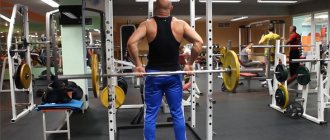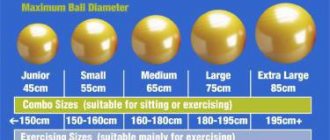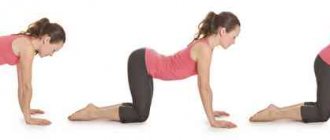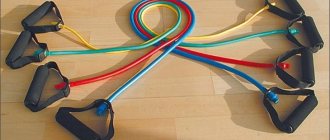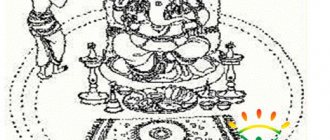Zass exercises are a set of static (isometric) and dynamic exercises developed at the beginning of the 20th century by the famous circus artist Alexander Zass, also known under the stage name Iron Samson.
Zass exercises are a complex for developing strength by strengthening ligaments and tendons.
Alexander Zass proved that large muscles are not at all an indicator of physical strength. The basis of real strength lies in strengthening and developing the strength and resistance of the tendons.
Later, in the 60s of the 20th century, based on the Alexander Zass complex, numerous static or isometric exercises were created, which gained popularity all over the world and were included in the training programs of both professional and amateur athletes.
However, unlike the Zass system, which was a harmonious complex, such static exercises are less effective, since they are often aimed at working out individual parts of the body, leaving others unattended. And, since everything in the human body is interconnected, leaving something without attention, the effectiveness of exercises aimed at one thing is significantly reduced.
The Zass set of exercises is aimed at working out the entire body and this is its undeniable advantage over any disparate static exercises created subsequently.
Zass exercises do not require special space or equipment for training. All you need is a little free space and time.
Rules for performing Zass exercises
When performing exercises, it is recommended to adhere to the following rules:
- Breathing throughout all exercises should be calm;
- When performing exercises, a so-called dense wave of force is created, which must take over the entire body, while the whole body must be pressed into force, which will strengthen the connection between tendons, muscles and joints;
- You should try to achieve a good power wave, while entering and exiting the exercise should be carried out smoothly without breaks;
- An important element of successful exercise performance is a positive attitude before training;
- The fundamental basis when performing exercises is a combination of tension and relaxation, which allows you to feel the energy of strength;
- The recommended intervals between exercises are 30-60 seconds. However, if a more powerful effort is required, the intervals can be increased to several minutes;
- Any discomfort, especially rapid heartbeat, difficulty breathing, etc., is a reason to immediately stop training and not resume until you have completely calmed down;
- At the beginning of training, you should not apply maximum effort;
- At the beginning of training, the tension should be kept for no more than 5-8 seconds, and only after a certain time can the duration of the tension be increased;
- The number of exercises performed daily should be from 5 to 8 exercises, in each exercise it is recommended to do 3 approaches sequentially, first at 60% tension, then at 90, and 75%;
- A full workout should not be done more than 2 times a week and should not take more than an hour.
Children's hobby
Alexander Ivanovich Zass was born in Vilnius . My love for the circus began with my first visit to the show. What shocked the boy the most was the performance with trained animals and the performances of the athletes. The event that happened at the end of the speech determined the path of life. When the circus performer invited those who wanted to unbend the horseshoe, Sasha’s father came on stage and repeated his act. The boy realized that he had potential, but it needed to be developed.
Alexander read many books about physical development, got acquainted with the training of Anokhin and Sandov. The latter’s book on body building became a sports bible for the teenager. He built a trapeze arena, stone weights, and began using dumbbells. I trained my agility with the help of a throwing board, grabbing a flying stone in the air. The sports corner was constantly improved by adding new equipment.
Correct exercise test
Once a week you can conduct a small test, which will be an indicator of the progress of strength and its quality:
Keeping your arms down, try to stretch the towel using 95% effort. After finishing, listen to the sensations of your hands; if everything is in order with the muscles, then you can raise your hands first to the sides, then up.
An excellent result and evidence of progress will be the ability to stretch the towel for more than 90 seconds.
The inability to complete the test within 60 seconds indicates overexertion when performing basic exercises and indicates the need to reduce the load.
Zass's original set of exercises involves the use of chains. However, the chains can be replaced with any durable fabric. Below are two sets of isometric (static) and one set of dynamic exercises by Alexander Zass
World fame
Pasolini knew perfectly well the capabilities and achievements of Alexander Zass. Therefore, he did not hesitate to offer him a long-term contract with payment of a fifth of the fee. The athlete agreed.
Thus began his international tours: Italy, Germany, England, Switzerland, France. Everywhere he is called Samson. Stunning performances became a sensation wherever they took place.
However, Alexander does not stand still. He continues to develop: he studies the performances of other strongmen, updates his numbers, constantly complicating them with additional tricks.
In 1924, in the publication “Health and Strength” (England), on a separate color spread, portraits of A. Zass, or Samson, and E. Sandow, who never ceased to be the athlete’s idol, were placed together.
In 1925, Pullum published the book “The Amazing Samson” in London. The author presented the amazing life and career growth of the Russian strongman.
In 1938, in Sheffield (England), Samson staged a performance of himself, lying on a cobblestone street, being run over by a truck fully loaded with coal. The shocked crowd furiously shouted: “Glory to the Russian Samson!” - when the safe and sound Alexander Zass stood up from the pavement and bowed to the jubilant audience.
Alexander Zass compiled and published more than one method for developing physical strength, and created a wrist dynamometer. The “man-projectile” attraction is also the invention of the Russian Samson. He spoke several European languages.
Alexander Zass gave almost 60 years of his life to the circus, of which about 40 years he performed power tricks.
In 1962, a natural athlete of the 20th century. died and was buried at Hockley, near London.
Isometric exercises:
The first set of isometric exercises
Exercise 1 Take the ends of the chain in your hands. Bend your right hand and stretch the chain with it; hold the other end in your straight left hand. Then switch hands and repeat the exercise.
Exercise 2 Hands in the starting position are kept shoulder-width apart or slightly wider than shoulder-width apart. Stretch the chain, but at the same time tense not only the arm muscles, but also the chest muscles and latissimus dorsi muscles.
Exercise 3 Extend your bent arms in front of your chest and stretch the chain. This exercise works the muscles of the arms and chest.
Exercise 4 The chain is stretched behind the back. The primary effect is on the triceps.
Exercise 5 As in the previous exercise, stretch the chain behind your back. But this time, in addition to the triceps, tighten your abdominal and chest muscles.
Exercise 6 Before starting the exercise, you need to exhale. After exhaling, wrap the chain around your chest and secure it. Then take a deep breath, tighten your pectoral muscles and latissimus dorsi, and stretch the chain.
Exercise 7 Here we will need two chains. You need to attach leather loops to one end of each chain, and put your feet through these loops. The chain is stretched, and the trapezius muscles and arm muscles are tensed.
Exercise 8 When stretching the chain, change hands in the starting position. The triceps and deltoid muscles are tense.
Exercise 9 As in the previous exercise, change the starting position. In addition to your arms, change the position of your legs.
Exercise 10 When stretching the chain, use your right thigh first, then your left thigh.
Exercise 11 This time, change the position of your arms, legs and torso as you stretch. You need to do 2 bends, to the left and right leg.
Exercise 12 The chain is stretched while lying on the floor, the muscles of the shoulder girdle and triceps are tensed. The body must be in constant tension.
Exercise 13 Now you need to stretch the chain in a handstand, using the muscles of the arms, back and neck. When looking for balance in the stance, try to transfer all the load to your fingers.
Exercise 14 To perform this exercise you will need to use two loops. When stretching the chain, the neck and back muscles should tense.
Exercise 15 When you perform an exercise that develops the muscles of the arms and quadriceps, change the position of the arms and legs.
Exercise 16 As in exercise 14, here you will need two loops. The main impact is on the muscles of the back of the thigh, and they must be tensed while stretching the chain. You can vary the exercise a little and move your leg to the side when stretching. Change the starting position of your legs and repeat the exercise.
Second set of isometric exercises
Exercise 1 Take the chain in your hands, bend them and extend them in front of your chest, your elbows should be approximately at shoulder level. Apply force and try to stretch the chain.
Exercise 2 Place your bent arms behind your head. While stretching the chain, change its working length.
Exercise 3 In this exercise we will need two chains with handles attached to their ends. Place the feet of your hands through some of the handles, take the others in your hands, bend them and lift them to your shoulders. Stretch the chains straight up. Next, place the handles at head level, and then above the head.
Exercise 4 Once again I will use two pens. Place the foot of your right foot into one, take the other in your right hand and lift it up. A slight bend of the arm at the elbow is allowed. When you straighten your arm, the chain should stretch upward. Then you need to repeat the exercises with your left hand.
Exercise 5 As you inhale, wrap the chain around your chest and secure it. Then take another deep breath and try to break the chain, to do this you need to tense your chest muscles and latissimus dorsi muscles.
Exercise 6 In the starting position, place your feet wider than your shoulders. Take one handle in your straight left hand and hold it near your left knee, the other handle is in your bent right hand near your waist. In this position, the chain is stretched, then the hands are changed.
Exercise 7 Take one end of the chain in your hands, and the other must be secured. If you have a hook in the wall at waist level, then secure the end to it. Place your feet wider than your shoulders and pull the chain. Try to pull it out of the hook.
Exercise 8 Now you need to secure one end to a hook in the floor, and attach a handle to the other end. Then you need to grab this handle with both hands at knee level and try to tear the hook off the floor. At the same time, the muscles of the back, arms and legs become tense. Then you can repeat the exercise, holding the handle with your hands at waist level or behind your back.
Notes
Evgeniy Sandov became Zass's idol from adolescence. He conducted a correspondence competition with him and he did not let his spiritual teacher down: he took the next broad step in the development of the method and methods of developing strength.
Zass combined tendon exercises with chains and dynamic exercises with a bag. The bag exercises helped him develop more muscle mass. This mass was needed not so much for performing the numbers, but for acquiring a “marketable” appearance.
The morning classes ended with a series of exercises with a bag. The bag was shaped like a boxing bag and was filled with sawdust. The bag weighed 7 kilograms. Every day young Zass poured out a handful of sawdust and added a handful of sand. When all the sawdust was replaced with sand, he began to pour out the sand and add shot. In the end, he trained with a bag filled with lead, weighing about 70 kilograms.
But imagine: you throw a bag of sawdust and catch it on your back. And a year later - a bag of sand! And at least henna.
Read more: The most effective basic triceps exercises
Between sand and lead, taking into account the density, you can use iron. Lead, babbitt, old batteries. The bag can be sewn from dense leatherette, inserting an iron zipper from the side (under cover). Alternative option: tarpaulin fabric on the outside, bag fabric on the inside.
Alexander's day began with a three-kilometer run. Then there were trainings with iron rods - he bent them on his knee, tied them in a knot, curled them in a spiral. He learned to break chains in two movements: take two adjacent links, squeeze them with his fingers, turn back and forth until it stops - and the chain breaks.
A lot of time was spent on exercises to develop the pectoral and back muscles. Having loaded the platform placed on his chest with stones, young Zass took several deep breaths, then rested, after which he stood on the “bridge” and bent over.
Zass often repeated: Large biceps are not a criterion of strength in the same way as a large belly is a sign of good digestion.
“Muscles by themselves will not hold horses pulling in different directions, but tendons will, but they need to be trained, they need to be developed, and there is a way to strengthen them.”
Ivan Shutov, Gennady Ivanov - modern strongmen - use the Zass system.
By means of the task itself.
“See: Tendon exercises.
Evgeniy Sandov became Zass's idol from adolescence. He conducted a correspondence competition with him and he did not let his spiritual teacher down: he took the next broad step in the development of the method and methods of developing strength.
Zass combined tendon exercises with chains and dynamic exercises with a bag. The bag exercises helped him develop more muscle mass. This mass was needed not so much for performing the numbers, but for acquiring a “marketable” appearance.
The morning classes ended with a series of exercises with a bag. The bag was shaped like a boxing bag and was filled with sawdust. The bag weighed 7 kilograms. Every day is young
Zass
I poured out a handful of sawdust and added a handful of sand. When all the sawdust was replaced with sand, he began to pour out the sand and add shot. In the end, he trained with a bag filled with lead, weighing about 70 kilograms.
But imagine: you throw a bag of sawdust and catch it on your back. And a year later - a bag of sand! And at least henna.
Between sand and lead, taking into account the density, you can use iron. Lead, babbitt, old batteries. The bag can be sewn from dense leatherette, inserting an iron zipper from the side (under cover). Alternative option: tarpaulin fabric on the outside, bag fabric on the inside.
Alexander's day began with a three-kilometer run. Then there were trainings with iron rods - he bent them on his knee, tied them in a knot, curled them in a spiral. He learned to break chains in two movements: take two adjacent links, squeeze them with his fingers, turn back and forth until it stops - and the chain breaks.
A lot of time was spent on exercises to develop the pectoral and back muscles. Having loaded the platform placed on his chest with stones, the young
Zass
took several deep breaths, then rested, after which he stood on the “bridge” and bent over.
Zass often repeated: Large biceps are not a criterion of strength in the same way as a large belly is a sign of good digestion.
“Muscles by themselves will not hold horses pulling in different directions, but tendons will, but they need to be trained, they need to be developed, and there is a way to strengthen them.”
ALEXANDER VASILIEVICH ZASS (SAMSON) ALEXANDER VASILIEVICH ZASS (SAMSON) ALEXANDER VASILIEVICH ZASS (SAMSON)
Dynamic exercises by Alexander Zass
Exercise 1 Starting position - feet shoulder-width apart, bag (weight) on the floor near your toes. Bend over, bend your legs slightly, grab the bag with your hands and lift it to your chest at the same pace. After a pause, squeeze with straight arms, clearly fixing, lower to the chest and to the floor. Repeated 10–15 times.
Exercise 2 Starting position - standing, heels together, toes apart, bag in hands on chest. Slowly squat down on your toes while simultaneously squeezing the bag up onto your straight arms. After a clear fixation, lower the bag onto your chest while straightening your legs. Watch the synchronous movement of the arms and legs. Repeat 10–15 times.
Exercise 3 Starting position - standing, feet shoulder-width apart, bag in the palm of one hand, near the shoulder. Squeeze the bag with your straight arm and rotate it twice left and right, using your wrist as the axis of rotation. Return to starting position. Repeat the exercise until the working muscle groups become tired. Then the exercise is performed with the other hand. After some time, changes are made to this exercise (mainly for finger development). After lifting the weight onto your straight arm, begin moving each finger individually, as if you were trying to lift the bag even higher. Perform until the working muscle groups are tired.
Exercise 4 Starting position - standing, feet slightly wider than shoulders. The bag is in the palm of the bent arm near the shoulder, the elbow is moved to the side. By pushing your arms and legs, throw the bag from one hand to the other so that the bag describes a semicircle in flight. Then the exercise is performed in reverse order. Gradually increase the flight path of the bag. Repeated 10–15 times.
Exercise 5 Starting position - standing, legs wider than shoulders, slightly bent at the knees. Bag in hands near knees. Straightening your legs and torso, throw the bag up above you 1.0–1.5 m. Catch it on your shoulder blades and neck (with shock absorption on your legs). Then push it to your left and, without letting it fall to the floor, catch it with your hands. Throw up again, catch on the neck and shoulder blades and throw to the right, then catch with your hands. Repeat 10-15 times.
Exercise 6 Starting position - lying on your back (on the floor), take the bag located on the floor behind your head with straight arms and slowly lift it up until your arms are vertical. Lower it to your chest, squeeze and slowly return to the starting position. Repeat 10-15 times.
Exercise 7 Starting position is the same. Raise your legs, bend them at the knees, put the bag on the soles of your feet and squeeze, straightening your legs. After fixation, lower them to the starting position. Perform until the working muscle groups become tired. As training progresses, begin to perform the exercise with each leg in turn.
Exercise 8 Starting position - standing, heels together, toes apart, hands with the bag below. With an arc to the left, lift the bag above your head with straight arms, then lower it in an arc to the right down to the starting position. The next repetition, the movement is performed in the other direction. Perform 10-15 times.
Breathing and concentration
When performing Zass exercises, one of the priority tasks is concentration. You should also pay increased attention to proper breathing. Inhalation should coincide with the most favorable conditions for expanding the chest while expending the least amount of effort when performing the exercise. For exhalation, the most favorable position is to bend the body, bring or lower the arms. The tempo of movements when performing exercises should be slow at first, and as training progresses, it should be medium.
Application area
Zass isometric exercises are recommended in the following cases:
- The athlete has an initial level of training. In static conditions, it is impossible to obtain a load that the body cannot withstand. Accordingly, when performing the exercises of Zass (“Iron Samson”), a person does not expose his tendons to danger.
- In normal training, the athlete has reached a dead end. For many, one day a dead point occurs when, with the same efforts, no development occurs. The philosophy of isometric exercises will allow you to look at training in a new way and quickly get out of a dead end.
- When you need to increase your strength. In this case, the static load should alternate with dynamic.




